The Advisory Opinion on that page states "The Veterans Health Administration (VHA) is designated a health plan... VHA's treatment activities…
News 9/8/10
From HIT and Hockey Fan: “Re: Bobby Orr will enjoy this. Use meaningful useful EHRs (Epic in the office) to win a night at the UPMC Health Plan’s luxury box at the new Pittsburgh Penguins Arena. If successful in enticing the doctors to provide care as defined in the letter, UPMC Health Plan and UPMC will be paid a bonus from your tax dollars by CMS, which will more than cover the cost of the luxury box for the entire season.” I think I’ve mentioned before that I was UPMC’s box suite guest once at a Steelers opener at Heinz Field, which was somewhat wasted on me since I don’t get the point of watching someone else play sports (especially millionaires), but the atmosphere was interesting. There was lots of food, drinks, and nattily attired male UPMC executives talking shop and watching the game on the TV monitor while their carefully coiffed wives chatted harmlessly in the living room area. Just outside our hermetically sealed and climate controlled luxury digs were people (their patients, most likely) cheering, waving Terrible Towels, and actually paying attention to what was happening on the field. It was pretty enjoyable once I got over the irony of a non-profit hospital system spending money to support a billionaire’s sports team.
From Ricardo: “Re: Napochi. I’m curious about your impressions. Someone sent me a link and they are new to me.” Never heard of them. They sell PM/EMR, but they don’t call them that exactly. The company has offices in Alabama and China (there’s an odd pairing). Their Web site isn’t ready for prime time if the number of placeholder pages is any indication. They claim 300 hospital and practice customers, but I bet most of them are in China (just guessing).
It defeats the purpose of a survey asking about compassion and spiritual beliefs when an atheist blog urges its readers to barge in and vote predictably, so take the above results with a truckload of salt. Before the ballot box stuffing commenced and real HIStalk readers were voting, it was running about 50-50. New poll to your right: is the typical practice-based EMR capable of collecting and presenting the information needed for practices to assume and manage population-based risk?
University of Mississippi Medical Center chooses Epic for a $36 million project. They expect Uncle Sam to pay $20 million of that in HITECH money.
A University of Rochester Medical Center doctor loses a flash drive containing the PHI of several hundred patients. In typical horse-left-barn fashion, the medical center vows to start using encryption. Maybe losing a drive is the best thing that ever happened when it comes to information security — embarrassing publicity apparently launches more encryption projects than any kind of thoughtful planning and it only takes one episode per hospital.
Healthcare Innovative Solutions (HIS) is supporting HIStalk as a Platinum Sponsor, I’m happy to announce. The Seville, OH company provides clinical systems implementation, process optimization, CPOE and EHR consulting, medication safety, order set, and clinical decision support services. They also do HIPAA security, strategic planning, selections, and HIE work. Here’s a white paper (warning: PDF) describing their CPOE work at Mercy Health Partners (OH). I ran across this profile and video about founder Daniela Mahoney, RN whose story is quite interesting and worth watching. Inga and I thank Healthcare Innovative Solutions for supporting HIStalk.
AMIA is offering prospective corporate members free attendance at its Industry Day, held during its annual conference in Washington, DC on November 15. They have a few spots left.
Misys shareholders won’t get their $1.2 billion in Allscripts stock proceeds immediately, as the IRS evaluates whether Misys is on the hook to pay $170 million for what may be interpreted as a material reorganization of its corporate structure.
Scotland-based charge master vendor Craneware, flush with cash after a good year, is on the hunt for acquisitions valued at up to $30 million. Nearly all of its business is in the US and the company is looking for a bigger piece of the healthcare reform pie.
mdHub launches the mobile version of The Little Blue Book, the physician directory formerly distributed on paper by WebMD. It also includes pharmacies, hospitals, and health plans. I don’t exactly understand the pricing model, which is based on regions, but I’m sure you can figure it out if you’re interested.
Everybody’s getting into the physician recommendation business, apparently. A reader says Angie’s List (of which she’s not a member) has sent several solicitations about doctor ratings, some of which seemed curiously timed to her Google search activity. I can’t imagine paying for reviews, but apparently some do (and some complain about the result, Google tells me).
In Canada, Northeastern Ontario Network (NEON) adds six new hospitals to its Meditech hosting service, bringing the total to 19.
WellStar Health System (GA) fires its CEO following settled charges of Medicaid overbilling, which he had blamed on its billing systems.
New CMS head Don Berwick plans to start using his agency’s $10 billion innovation money to fund 100 to 300 sites testing new models of patient care, which I assume means accountable care organizations.
Google is looking for volunteers to translate chosen healthcare articles into Hindi, Arabic, and Swahili on local language versions of Wikipedia.
Big German healthcare software vendor CompuGROUP will purchase Visionary Healthcare Group, which includes Visionary Medical Systems, a Tampa, FL PM/EMR vendor. The company’s first US investment was majority ownership of Noteworthy Medical Systems 18 months ago. I think it’s safe to assume that more acquisitions will follow.
HP’s board fired CEO Mark Hurd even after finding that he violated no company policies, triggering a severance payout worth up to $40 million. Oracle hired him on Labor Day as co-president. Now HP is suing him, claiming he violated his confidentiality agreement by going to work for a competitor. HP doesn’t like Oracle now that it sells its own servers, courtesy of its acquisition of Sun last year.
A British study finds that pharmacists could reduce nursing home medication errors by over 90% if put in charge of the process. The study found that 70% of patients had at least one medication error on any given day.
New Zealand will pilot e-prescribing next year.
Thinix releases a touch-friendly, iPad-like user interface for Windows-based virtual desktops, providing as a press release example a nurse working both remotely and on the desktop.
The former president and CEO of Perceptive Software, acquired by Lexmark in May, explains why the $280 million, all-cash deal makes sense using a healthcare example. That’s not surprising since Perceptive always had a fairly strong healthcare presence with its ImageNow scanning and barcoding products.
England-based Avia Health Informatics PLC announces executive changes to support its plan to enter the US market with its odd lot of products sold under the Plain Healthcare and Odyssey brands: ship telemedicine, patient symptom self-assessment, paramedic fall evaluation, prison healthcare, and nurse triage.
Exciting, to me anyway: the sequel to Wall Street hits theaters September 24. No Bud Fox, but GG’s back 23 years after the original.
Mount Kisco Medical Group executes an agreement to deploy NextGen’s EHR, PM, and Patient Portal for its 230-physician practice. Looks like they are replacing Misys Vision and EMR.
Nassau University Medical Center (NY) adds Streamline Health’s Enterprise Health Information Management suite to integrate with its existing Eclipsys Sunrise Clinical Manager. Nassau already utilizes Streamline’s accessANYware product.
ASC software vendor AmkaiSolutions completes a $3 million round of Class E equity financing. The company plans to pursue “a broader sales and marketing program.”
Central Texas Medical Center (CTMC) goes live on CPOE. CTMC is part of Adventist Health System, so I assume it’s a Cerner install.
Data point: more than half of the 354 million doctor visits each year for acute medical care are not with a patient’s primary physician and more than a quarter are in hospital ERs.
Emdeon announces plans to acquire Chamberlin Edmonds, a provider of government program eligibility and enrollment services. The $260 million purchase expands Emdeon’s offerings for hospitals.
Medical scribe is one of the hot, up-and-coming healthcare jobs that has become especially popular with young medical and nursing students. The pay isn’t exceptional — $8 to $10/hour — but the job gives scribes the opportunity for up-close exposure to physicians providing patient care, particularly in the ER. Several enterprising companies are establishing offices close to major universities in order to attract ambitious pre-med and nursing students. The scribes receive basic training on medical terminology and coding before hitting the front lines.
University of Utah Medical Group selects Practical Data Solutions to migrate its data warehouse and analytical reporting to Epic. The academic health system goes live on Epic November 1st.
Carestream Health acquires Quantum Medical Imaging, an x-ray imaging provider with a strong base of community hospitals and smaller clinics.
Catholic Health Initiatives (CO) hires Sheryl Rose for the newly created position of Chief Information Security Officer.
A George Washington University ER physician initiates a study to see how accurately ER docs and PAs diagnose wounds from patient-generated cell phone images. Five months into the study, the data indicates a 90% accuracy rate. And, accuracy increases with better quality images.
Sponsor Updates
- Carolinas HealthCare System selects Medicity to help build a multi-state HIE that encompasses the health system’s 32 facilities, plus community physicians and other caregivers.
- Mayo Regional Hospital (ME) chooses Sage Intergy EHR of its eight physician practices.
- Across the pond, King’s College Hospital goes live with iMDsoft’s MetaVision in its critical care unit.



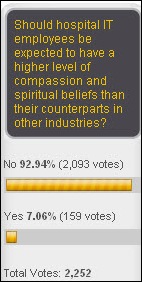

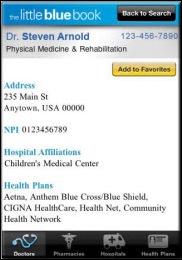

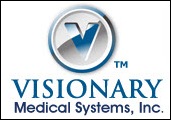


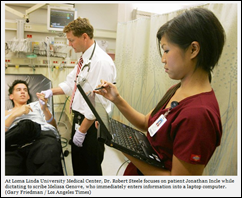
























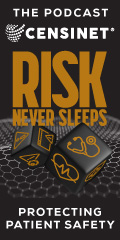

















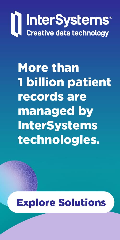






























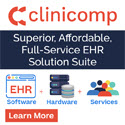








Carolinas HealthCare System selects Medicity to help build a multi-state HIE
So what’s the need for Medicity when you have a Cerner enterprise installation???
‘University of Utah Medical Group selects Practical Data Solutions to migrate its data warehouse and analytical reporting to Epic.’
It would be interesting to know if these analyitic reporting tools are to be run against the live or shadow Epic db or the day old Clarity production copy?
Re: Angie’s List
While I can’t speak for Angie’s List, will convey that my digital native son found both his PCP and dentist here in Cambridge MA via Yelp. He’s quite happy with the results. So there may indeed be something to the use of social media to source services such as these. Don’t discount them so readily.
Connect the dots: “…UPMC Health Plan’s luxury box at the new Pittsburgh Penguins Arena…”
A luxury box for a non profit charging indigent patients a fee to “use their facilities” when they are sick, even though the facilities were donated? Indeed, the IRS has some work to do.
Medical Scribes
What’s old is new again! This is exactly how the medical transcriptionist profession began decades ago. Let’s get some MTs to help out with scribing. They already have the knowledge, experience and technical skills. Could be an amazing win-win for providers, EHR vendors and transcription companies.
re: scribes
8-10 bucks an hour is a bit of a misnomer, given the 20-30 dollars an hour the agency charges.
“…I dont get the point of watching someone else play sports (especially millionaires..)”
Many dont get the point of geeks spending endless hours down in the dungeon of a hospital picking away at a keyboard and starring at a monitor.
Does anyone else feel that the listing of medical scribes as a hot profession is a major indication that healthcare IT as an industry has FAILED to deliver a usable product? Unless the patient is coding or the provider is up to their elbows in the patient, they should be able to document in the EHR without totally disrupting their workflow.
My daughter is working as a scribe for one of the best internists in our city – she is taking a year off before starting medical school. Although I think it is a shame that this internist found his EMR to be so challenging to use that he decided to take on the added overhead of a scribe, I can’t imagine a better way for my daughter to prepare for medical school. His quality of life has improved dramatically…no longer working 2-4 hours per weeknight (and more on weekends) to complete his chart work.
By the way…”It was pretty enjoyable once I got over the irony of a non-profit hospital system spending money to support a billionaire’s sports team”… excellent example of why it’s so much fun to read HIStalk!
The scribe report basically confirms what many of the ad hominem attacked “luddites” have been describing on this site and others, including health care newal.
That extra help is needed to work around the unusable and flawed devices that cost millions of bucks, is an indictment of the industry, the company, HIMSS, C$HIT, and supports the evidence that the Congress was drinking their lool aid.
We want safe, effective, and usable devices to use to care for the patients. There are none out there. Industry leaders, get them approved by the FDA and stop hiding the deaths and injuries caused by these devices.
Furthermore, I can not type and I do n ot use spell check. I need a scribe.
Scribes ???
I thought voice regognition was to eliminate the need for all that? In fact, I have an Apple marketing video from 1990 that shows just how a new generation of Apple devices would handle all the medical communication (voice /video/ interaction, etc.) Didn’t happen…probably because Jobs is not on the video demo. I think the Pepsi guy was running Apple then.
I agree with ‘not tired’ …the addition of the scribe underscores the failure of the bedside IT solution we all have been promised.
Next marketing video, please.
Re: encryption
Built in to Windows (if you’re willing to spring for the deluxe versions) and Mac OS X. Corporate licenses should bring any extra costs down.
Therefore the “lost laptop” or “lost thumb drive” with unencrypted patient data is a phenomenon seems to combine negligence, carelessness and cheapness.